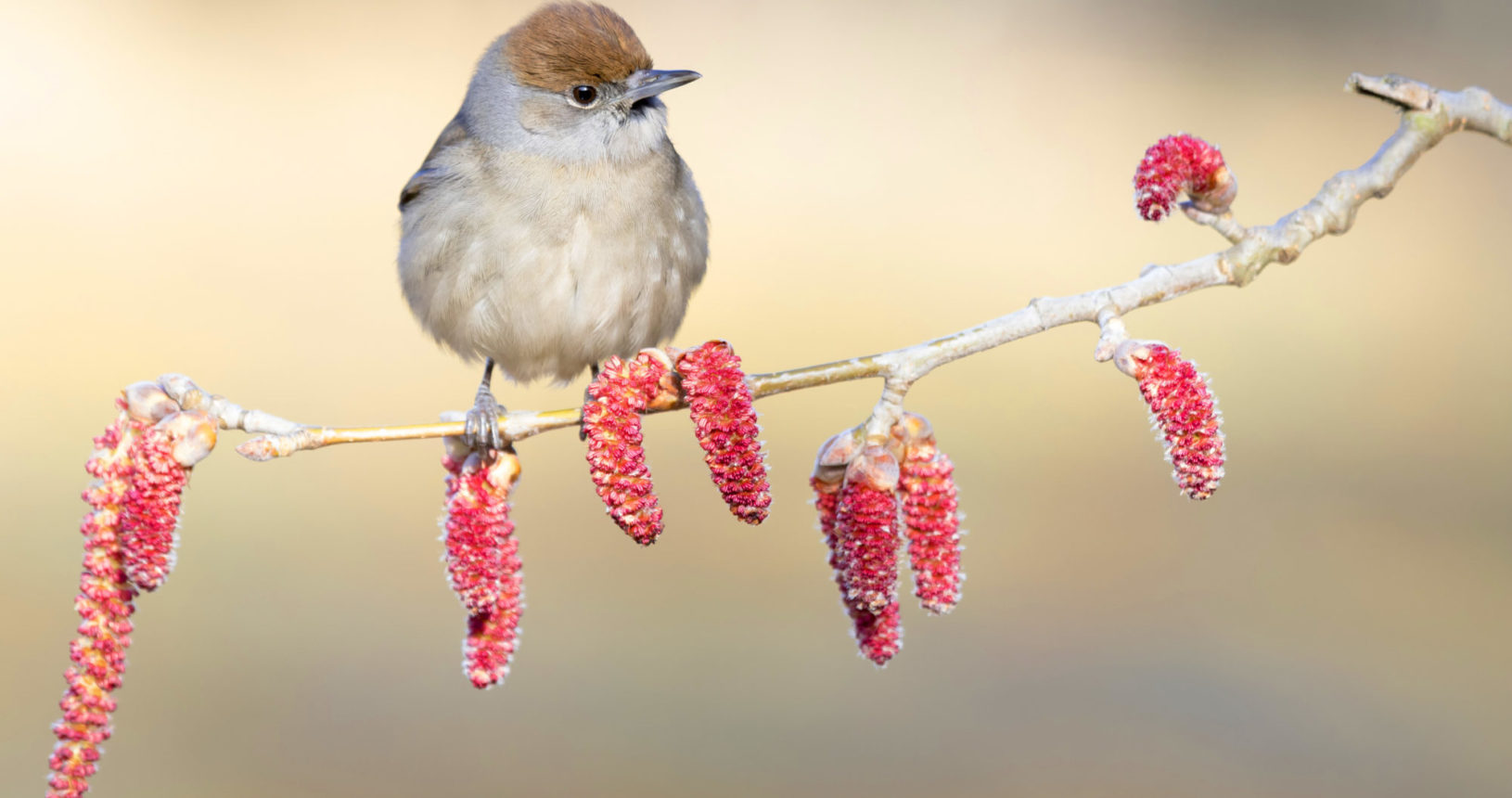| سيلفيا atricapilla
أوراسيا بلاككاب التصنيف: الطيور المغردة باع الجناح: 15-18 سم السرعة القصوى: 75 كم / ساعة حالة الحفظ: أقل إهتمام |
Sylvia atricapilla
Eurasian Blackcap Category: Songbirds Wingspan: 15-18 cm Top speed: 75 km/h Conservation Status: Least concern |
أَبُو قَلَنْسُوَة أو الخُورِي (يسمى الذكر منه الخُورِي وتسمى أنثاه الشَّمَّاس). مع غطاء أنيق من الريش الأسود على رأسه ، فإن Blackcap الذكر الصغير لا لبس فيه.
على الرغم من كونه طائرًا في الغابة ، إلا أنه مشهد شائع ومحبوب للغاية في المتنزهات والحدائق في جميع أنحاء أوروبا ، حيث يأتي بحثًا عن الفاكهة والتوت. عشاق الطيور ، المولعين بأغنيتها الجميلة – صفير موسيقي غني مع مجموعة متنوعة من النوتات – سيصابون بالصدمة لاكتشاف المخاطر التي يواجهها هذا “العندليب الوهمي” في رحلة الهجرة.

في البحر الأبيض المتوسط ، حوصرت الطيور المغردة من أجل الغذاء لعدة قرون. لكن الصيد غير القانوني على نطاق صناعي الذي يحدث في قبرص اليوم لا يشبه التقاليد الماضية. طلب مربح على السوق السوداء أمبلوبوليا“، ما يسمى بـ” طعام شهي “بلاككاب المحلي ، يقود المذابح الجماعية لمئات الآلاف من الطيور المهاجرة.
عند محاصرة البقع السوداء ، مثل منطقة قاعدة السيادة البريطانية في ديكيليا ومنطقة فاماغوستا ، يستخدم الصيادون شبكات ضباب ضخمة وعصي صمغ. هذه الأساليب غير الانتقائية ليست فقط فخًا مميتًا لـ Blackcaps ، بل إنها تشكل أيضًا خطرًا على أكثر من 150 نوعًا آخر من الطيور ، بما في ذلك الطيور الشهيرة مثل آكل النحل الأوروبي ، الصرد المدعوم باللون الأحمر وبومة سكوبس. ببساطة يتم قتل الطيور غير المرغوب فيها والتخلص منها.
تطور آخر قاسي هو استخدام أجهزة الاتصال الإلكترونية لجذب الطيور بأعداد كبيرة إلى مصيرها المأساوي. الطيور التي يتم أسرها ، إذا لم تموت من الصدمة ، فعادة ما تظل محاصرة ومكتئبة لساعات.
لمزيد من المعلومات حول التشريعات التي تغطي هذا النوع ، وكذلك الخرائط والأبحاث ، تحقق من: http://datazone.birdlife.org/species/factsheet/eurasian-blackcap-sylvia-atricapilla
With its neat cap of black plumage upon its head, the little male Blackcap is quite unmistakable.
Though a woodland bird, it’s a common and much-beloved sight in parks and gardens across Europe, where it comes in search of fruit and berries. Bird lovers, fond of its beautiful song – a rich musical whistling with a wide variety of notes – would be shocked to discover the dangers this “mock nightingale” faces on its migratory journey.
In the Mediterranean, songbirds have been trapped for food for centuries. But the illegal, industrial scale trapping taking place in Cyprus today is nothing like past traditions. Lucrative demand for black market ‘ambelopoulia’, a so-called local Blackcap “delicacy”, is driving the mass slaughter of hundreds of thousands of migratory birds.
At trapping blackspots, like the British Sovereign Base Area at Dhekelia and the Famagusta district, trappers use huge mist nets and glue sticks. These non-selective methods are not only a death trap for Blackcaps, they also pose a danger for more than 150 other bird species, including iconic birds such as the European Bee-eater, Red-backed Shrike and Scops Owl. Unwanted birds are simply killed and discarded.
Another cruel twist is the use of electronic calling devices to lure birds in huge numbers to their tragic fate. Captured birds, if they don’t die from shock, usually remain trapped and distressed for hours.
For more information on the legislation covering this species, as well as maps and research, check out: http://datazone.birdlife.org/species/factsheet/eurasian-blackcap-sylvia-atricapilla

Comments are closed.